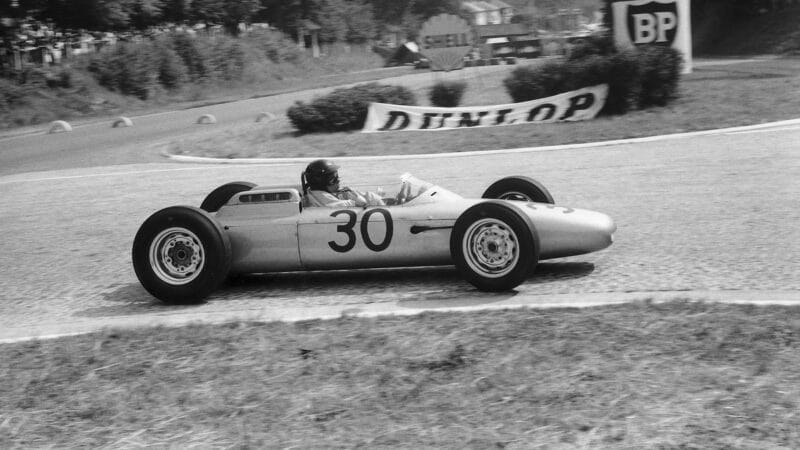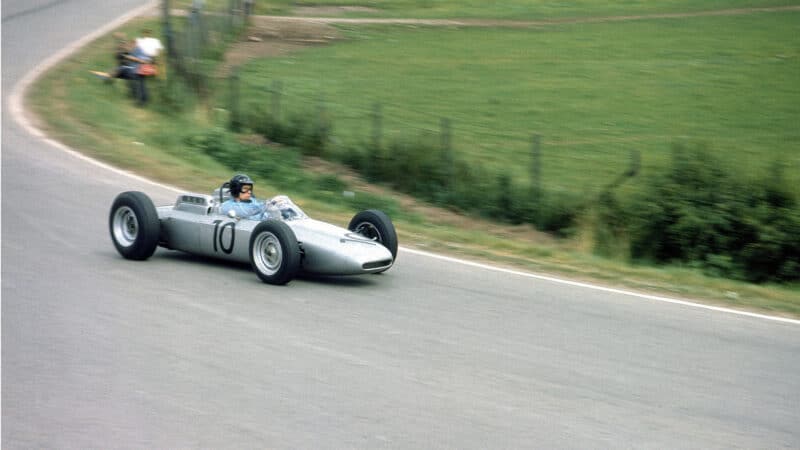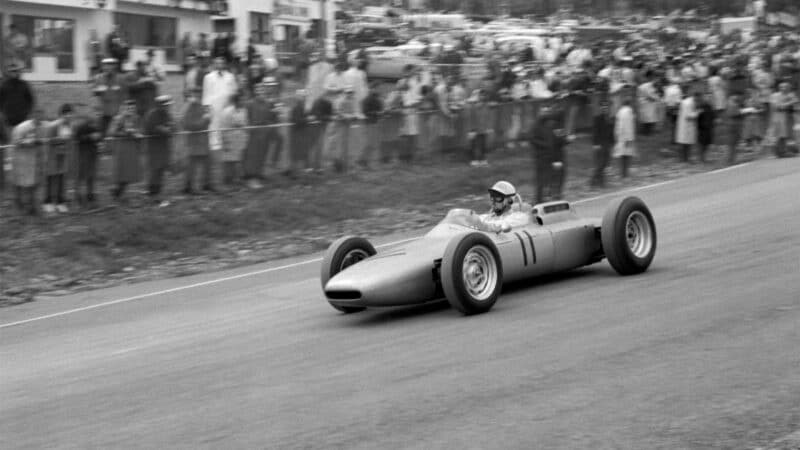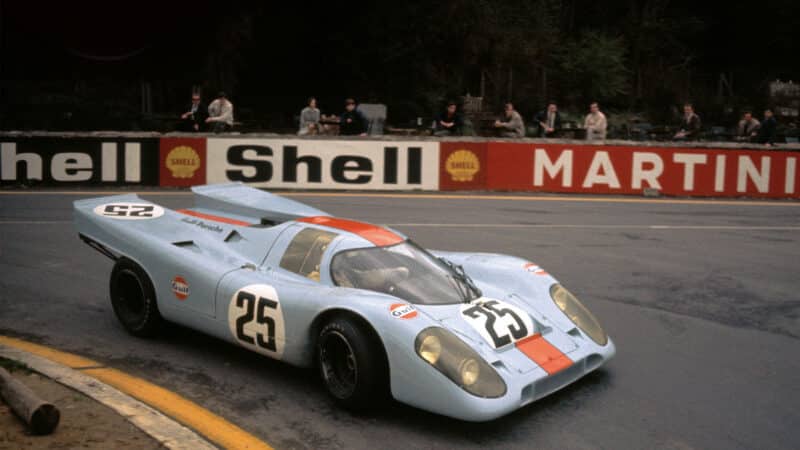Those two years as an F1 constructor were out of character, a corollary of the category’s renaissance from an F2 chrysalis. Porsche’s bulbous flat-four 718 had met with success in the latter category and was easily beefed up for F1’s switch to 1.5 litres in 1961. Indeed, but for the Ferrari ‘Sharknose’ of an inspired Giancarlo Baghetti at Reims, Gurney would have scored that first win a year earlier than he did. He also finished second in Italy and America. Much, therefore, was expected of the new car.
Gurney, jutting “like a giraffe” from its cockpit, worked wonders to qualify eighth for the Dutch GP in May and was running third in the race when he suffered the first sign of the gearbox problem that would eventually sideline him.
Twitchy Porsche might have withdrawn into its shell there and then but for Gurney’s persuasion. Just one modified V8 was sent to Monaco and he qualified it joint third, aka fifth, only to be eliminated in a first-corner accident not of his making.

Gurney on his way to victory in Rouen, 1962
The team did skip Spa while revisions were carried out – suspension, gear linkage, brakes – and it arrived at Rouen with renewed hope: Gurney qualified mid-grid, 1.7 seconds slower than the pole-sitting Lotus of Jim Clark.
The latter, however, had no answer in the race to Graham Hill’s BRM P57, which led comfortably until it was clattered by the privateer Cooper of Jack Lewis. Clark assumed the lead for three laps, whereupon his front suspension failed and Hill was restored to his rightful place. Meanwhile Gurney, who had stayed out of trouble and inherited places via the misfortunes of others, was now second. And this pattern continued when Hill’s V8 spluttered to a rough tick-over and no more because of fuel injection bothers, which allowed Gurney to smoothly tick off the remaining 13 laps.
At Solitude, he led from the first lap, outdistanced Clark’s Lotus – on the pole of a 14-car grid despite a tired Coventry Climax V8 – and headed team-mate Jo Bonnier in a 1-2 for the 804s after Clark spun out because of a rain shower.

Dan Gurney leads the 1962 Solitude Grand Prix for Porsche
Porsche
But Gurney’s greatest Porsche performance did not result in a win. After much testing at the Nürburgring, he secured pole for the German GP. Final practice – the ‘banzai’ session – had been compromised by rain, but Dan was three seconds faster than his nearest rival and was said to have another three in hand from testing. He and his car were in the ballpark basically. This they proved by leading the first two laps before having to give best to Hill’s BRM.
Then the battery broke loose in the Porsche’s cockpit. Adapting manfully to this unexpected, encumbering factor, the Californian chased Hill, the eventual winner, and the Lola of John Surtees in the pouring rain, the trio finishing fewer than five seconds apart after superb demonstrations of car control. Gurney, third, had been at his brilliant best.
Porsche contested two more GPs – a broken crown-wheel when third with 20 laps to go at Monza and a lapped fifth place at Watkins Glen – and that was that. No announcement, just a slipping away.
That French GP win had been a face-saver: we’ve done it; we’ve showed that we can do it; we’re off. The truth was that there was/is only room for one black horse in F1. Although it was absent from Rouen that day – up to its withers in an industrial dispute and also struggling to be competitive – that was always going to be Ferrari’s feisty stallion rather than Ferry’s faithful and strong ‘Boxer.’




